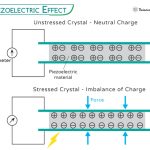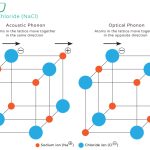Alternating Current
Alternating current (AC) is a type of electric current that periodically reverses its direction of flow. Its polarity changes over time, and its magnitude fluctuates sinusoidally, typically following a waveform like a sine wave. This variation results in the current alternating between positive and negative values as it cycles through different phases, characterized by its frequency. This behavior is opposite to a direct current (DC), where the waveform remains steady over time.
Alternating current (AC) was developed and popularized by Serbian-American inventor and engineer Nikola Tesla in the late 19th century.
How Does Alternating Current Work
An alternator is a type of generator that creates alternating current (AC). It works by having magnets, called the rotor, spin around near a group of wires that are wrapped in coils on a metal core called the stator. As the magnets rotate, they cause an electric current to flow in the wires, which produces AC voltage. This process repeats as the rotor continues to spin.
Alternating Current Diagram
An alternating current can be represented graphically, showing its periodic nature and how its direction and magnitude continuously change. This waveform illustrates how AC alternates between positive and negative values, corresponding to the changing polarity of the current. The curve smoothly oscillates, peaking at maximum positive and negative values, with zero crossings where the current momentarily equals zero.
Each complete oscillation from one peak to the next represents one cycle, with the time taken for one cycle being the period of the waveform. The frequency, measured in hertz (Hz), defines how many cycles occur per second, and the amplitude of the wave corresponds to the maximum current or voltage. The wavelength of an AC signal is the distance over which the signal’s shape repeats.
The symbol for alternating current (AC) is typically represented as a sine wave, reflecting the sinusoidal nature of AC’s voltage and current changes over time.
Examples and Applications
- Household Electricity: AC is used to power most home appliances, including lighting, refrigerators, air conditioners, and televisions. The standard voltage and frequency (e.g., 120V at 60Hz in the US) are designed to suit common household needs.
- Power Grids: AC is the primary type of current used in electrical power grids to transmit electricity over long distances. Its ability to be easily transformed to higher or lower voltages helps reduce energy loss during transmission.
- Transformers: AC is essential for the operation of transformers, which are used to increase or decrease voltage levels in the power grid. This transformation is crucial for efficient long-distance electricity transmission and distribution.
- Electric Motors: Many electric motors, including those in household appliances, industrial machines, and HVAC systems, operate on AC power. These motors benefit from AC’s ability to create a rotating magnetic field.
- Audio and Radio Systems: AC signals are used in audio and radio frequency transmissions. AC modulation techniques enable the transmission of sound, data, and communication signals over various media.
- Lighting Systems: AC powers various types of lighting systems, including fluorescent and incandescent bulbs. It allows for efficient energy use and easy integration with dimmer switches and other controls.
- HVAC Systems: Heating, ventilation, and air conditioning (HVAC) systems often use AC to power compressors, fans, and other components that regulate indoor climate.
- Electronics and Gadgets: Many electronic devices and gadgets, such as computers and chargers, use AC power, which is then converted to DC by internal power supplies for their operation.
Alternating Current Transmission to Homes
Generating and transmitting AC over long distances is efficient due to the use of high voltages, which are easily converted with transformers. Large generators produce power and then pass through transformers to increase the voltage for long-distance transmission. Once the electricity reaches a substation, the voltage is lowered and distributed through smaller power lines. Local transformers further reduce the voltage for home use. After passing through a household meter, the current enters a service panel with breakers to prevent overloads and is then distributed to outlets and switches throughout the home.
-
References
Article was last reviewed on Tuesday, October 1, 2024








